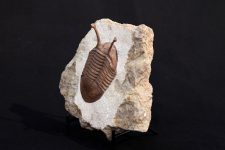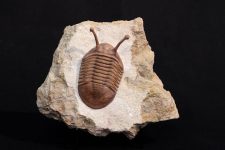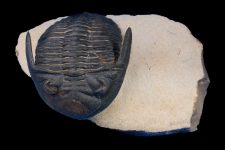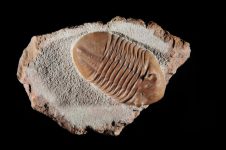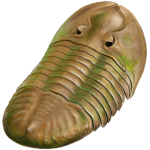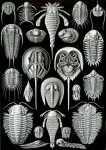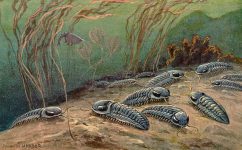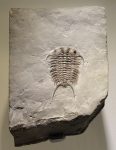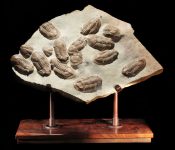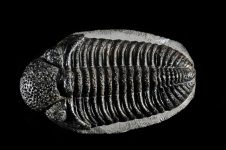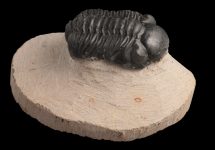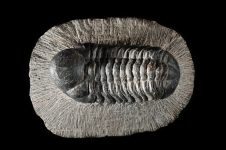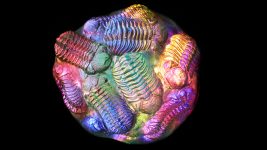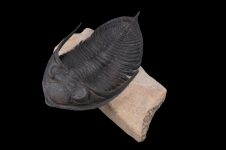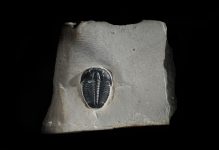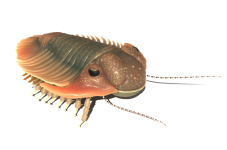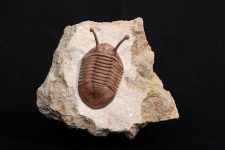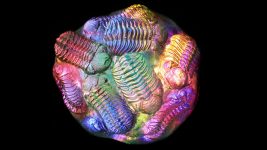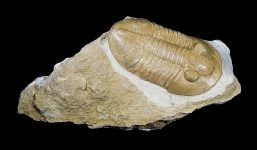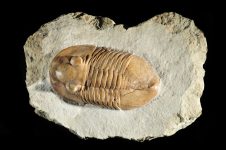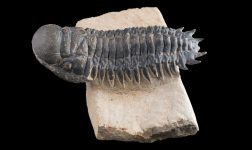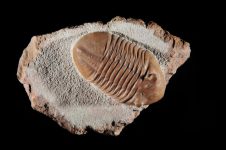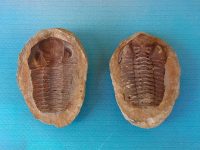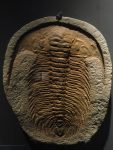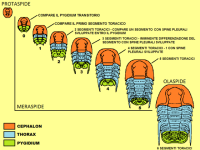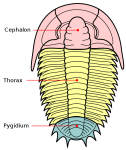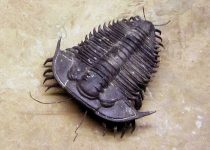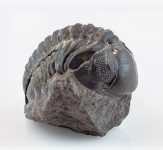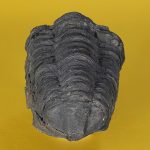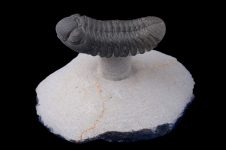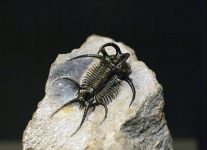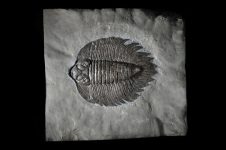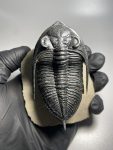TRILOBITE
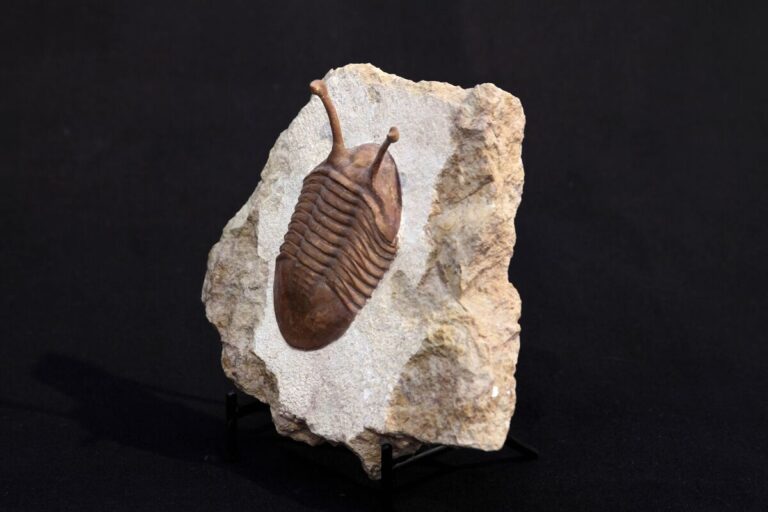
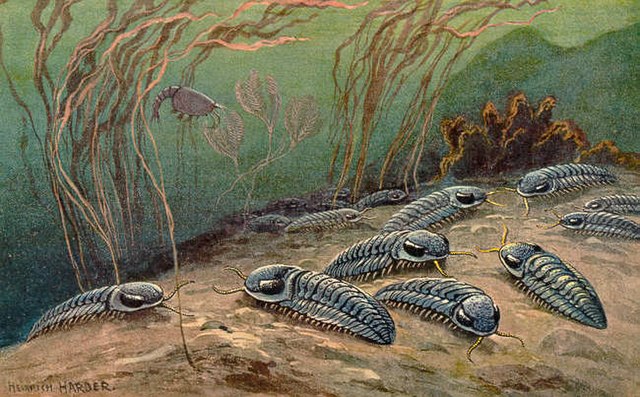
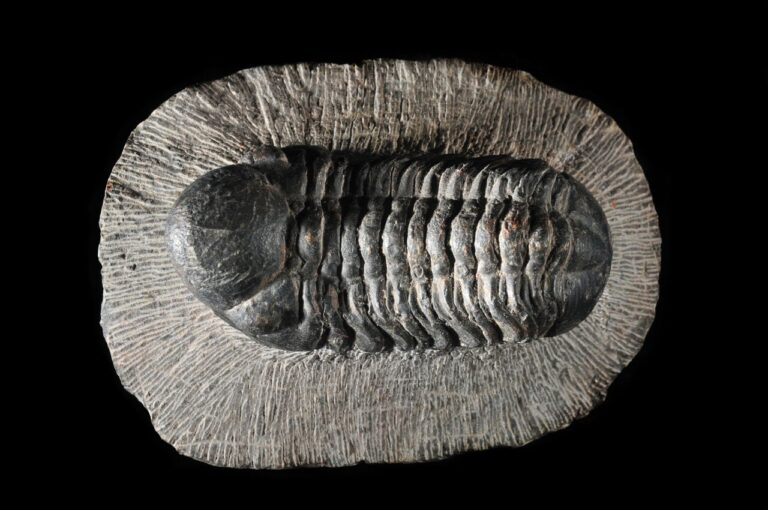
TRILOBITE
Trilobites are extinct marine arthropods that thrived from the Cambrian period (about 521 million years ago) to the Permian period (about 252 million years ago). They are one of the earliest and most diverse groups of extinct arthropods, characterized by their segmented bodies, calcite exoskeletons, and distinctive three-lobed appearance. Trilobites inhabited ancient seas worldwide and played a significant ecological role as predators, scavengers, and prey. In this exploration, we delve into their anatomy, evolution, diversity, habitats, extinction, and scientific significance.
Anatomy and Physical Characteristics
Trilobites exhibit several key anatomical features that distinguish them from other arthropods:
Exoskeleton: Trilobites possessed a hard exoskeleton composed primarily of calcite, a mineral form of calcium carbonate. This exoskeleton provided protection and support for the trilobite’s segmented body.
Segments: Their bodies were divided into three main sections: a central axial lobe (or axis) flanked by two lateral pleural lobes. This tripartite structure gave trilobites their characteristic three-lobed appearance.
Appendages: Trilobites typically had pairs of antennae and legs attached to their anterior (head) segment, which they used for sensory perception and locomotion.
Evolutionary History
Trilobites first appeared during the Cambrian explosion, a period of rapid diversification of multicellular life forms in Earth’s oceans. They evolved from early marine arthropods and diversified into numerous species throughout the Paleozoic era. Trilobites underwent significant morphological changes and adaptations over millions of years, reflecting their success and evolutionary innovations in ancient marine ecosystems.
Diversity and Classification
Trilobites exhibit remarkable diversity in size, shape, and ecological adaptations. Paleontologists have identified over 20,000 species of trilobites classified into several orders and families based on variations in exoskeleton morphology, eye structure, and other anatomical features. This diversity allowed trilobites to occupy a wide range of marine habitats, from shallow coastal waters to deep-sea environments, during their long evolutionary history.
Habitats and Ecology
Trilobites inhabited a variety of marine environments worldwide, including shallow seas, reefs, and continental shelves. They occupied ecological niches as active predators, scavengers, and filter feeders, depending on their species and adaptations. Trilobites played crucial roles in ancient food webs, contributing to nutrient cycling and ecosystem dynamics by consuming organic matter and serving as prey for larger marine predators.
Extinction
The extinction of trilobites occurred during the Permian-Triassic mass extinction event, approximately 252 million years ago, which marked the end of the Paleozoic era. Several factors may have contributed to their decline and extinction:
Environmental Changes: Global climate fluctuations, sea level changes, and shifts in ocean chemistry during the Permian-Triassic transition may have disrupted marine ecosystems and reduced suitable habitats for trilobites.
Competition and Predation: The emergence of new marine predators and competitors, along with changes in predator-prey dynamics, could have placed pressure on trilobite populations and contributed to their decline.
Ecosystem Instability: The Permian-Triassic mass extinction event, one of the largest extinction events in Earth’s history, resulted in widespread ecological disruption and the loss of numerous marine and terrestrial species, including trilobites.
Scientific Significance
Trilobites hold significant scientific importance as index fossils for dating and correlating rock layers in geological stratigraphy. Their well-preserved exoskeletons and abundance in sedimentary rocks provide valuable clues about ancient environments, climate conditions, and evolutionary patterns during the Paleozoic era. By studying trilobite fossils, paleontologists can reconstruct past ecosystems, track biodiversity trends, and investigate the processes driving evolutionary changes over geological time scales.
Cultural and Educational Significance
Trilobites have captivated human imagination and scientific curiosity for centuries. Fossilized trilobites are prized by collectors, museums, and educational institutions for their aesthetic appeal and historical value. Trilobites have also inspired artistic representations, scientific illustrations, and educational outreach initiatives, promoting public awareness and appreciation for Earth’s ancient biodiversity and geological history.
Conservation and Preservation
Efforts to protect and preserve trilobite fossils and associated geological sites are essential for maintaining their scientific and educational value. National parks, fossil reserves, and research institutions play crucial roles in safeguarding trilobite specimens, promoting public education, and supporting ongoing research into Earth’s ancient marine ecosystems and evolutionary processes.
